The clinical benefits
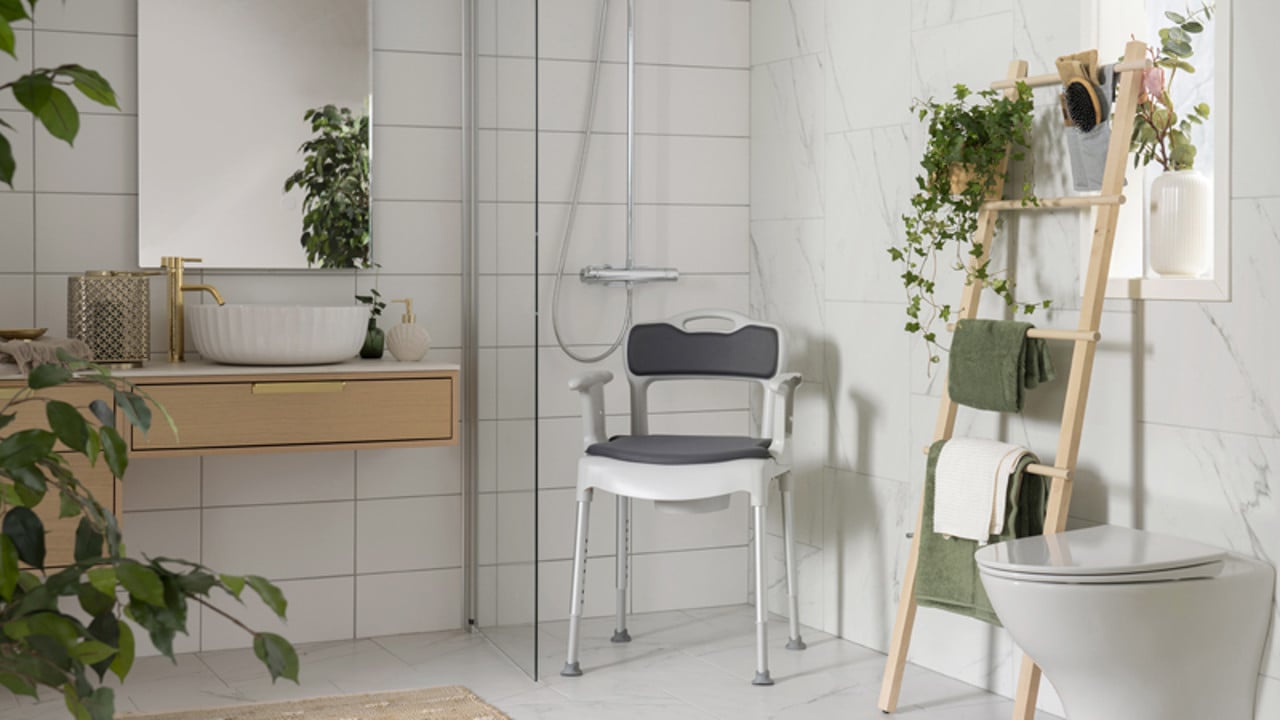
Introduction
As the global population ages, the need for assistive aids that promote independence and ease caregiver strain is growing. Many people face physical limitations that affect daily tasks like toileting, bathing, and grooming—essential activities for dignity and quality of life. These challenges impact both individuals and caregivers, placing physical and emotional demands on the latter.
This paper explores how shower commode chairs address these issues, highlighting their clinical benefits and how well-designed aids improve independence and caregiver conditions.
We cover:
• The challenges of an ageing population
• Activities of Daily Living (ADLs)
• Promoting independence and ageing-in-place
• Reducing the physical load on the carer
• The home as a functional workplace
• Shower commode chairs
• Clinical benefits
• Conclusion
The challenges of an ageing population
The global population is ageing rapidly. According to the World Health Organisation (WHO), 15.3% of the world’s population—approximately 978 million people—live with moderate to severe disabilities, with nearly half of this group being individuals aged 60 and older. As life expectancy continues to rise, so does the prevalence of non-communicable diseases and mobility impairments, increasing the need for assistive products. By 2050, over two billion people are expected to require assistive technology.*1, 2, 3
Ageing individuals often face challenges with Activities of Daily Living (ADLs), such as personal hygiene. Without proper assistive solutions, maintaining independence becomes more difficult, which can lead to social isolation, institutional care, or greater reliance on caregivers.*4
Providing access to well-designed assistive devices, such as shower commode chairs, is essential for maintaining their functional abilities and reducing the burden on caregivers.
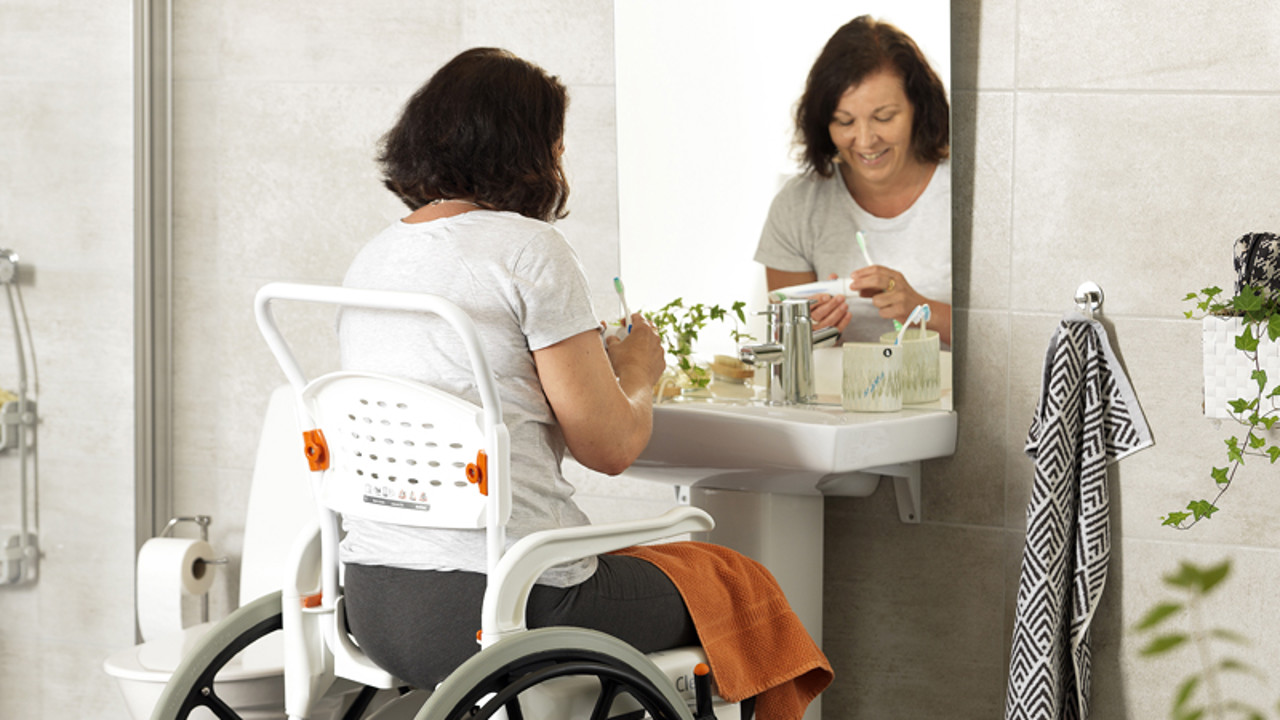
The importance of equipment for ADLs
Activities of Daily Living (ADLs), such as toileting, showering, and grooming, are essential to maintaining an individual’s quality of life. These tasks require coordination of mobility, balance, and strength, and without adequate support, they can pose risks of falls or injuries.
Shower commode chairs provide a practical, multifunctional solution to support individuals in performing these daily tasks safely and comfortably. By reducing the need for frequent transfers and offering stable, ergonomic support, these chairs enhance both independence and dignity in self-care routines.
For individuals with mobility challenges, features like height adjustability and tilt-in-space functionality further improve usability to meet varying levels of physical ability
and support needs. These features ensure a safer, user-friendly experience while addressing a wide range of care requirements.
Promoting independence and ageing at home
Assistive products play a vital role in enhancing functionality across key domains such as cognition, communication, hearing, mobility, self-care, and vision.*1 For example, self-care tools like transfer aids, bath seats, and shower chairs enable individuals with functional challenges to live more independently.*2
An important focus of SCI (spinal cord injury) rehabilitation and longer-term management is the development of individualised routines for showering, intimate hygiene, and managing neurogenic bowel.
A prescribing occupational therapist explains that getting the location of the under-seat access right is crucial, saying "it’s such a specific thing for people’s independence".*6 Without access to these solutions, many people face exclusion, isolation, and poverty, placing a greater burden on their families and society as a whole.*1
Assistive technologies, when customised to meet the specific needs of users and their environments, serve as effective tools for promoting independence and enhancing participation in daily activities.*3
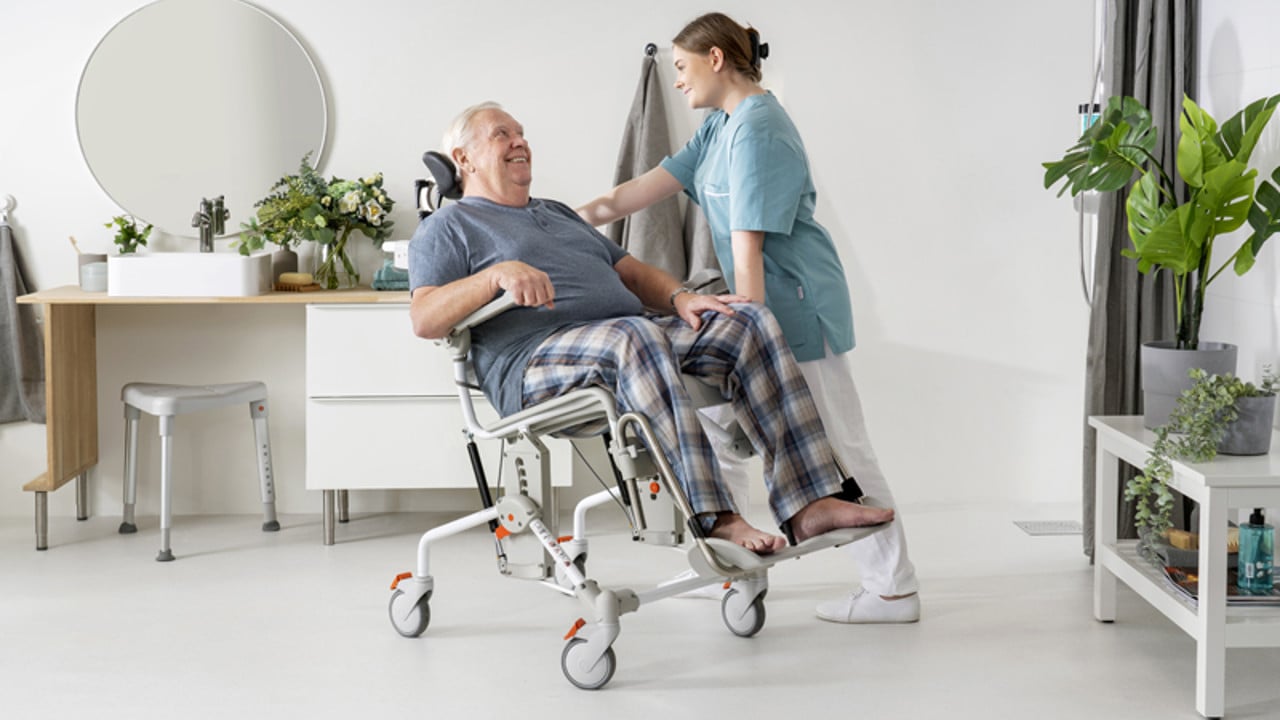
Reducing physical strain on carers
1993 study in the UK surveyed 140 commode chair users and 105 of their carers using a semi-structured questionnaire. The goal was to understand the reasons for commode chair use and their impact on carers' working conditions. The primary reasons for providing a commode included impaired mobility (130 participants), difficulty climbing stairs (128), and urinary incontinence (127). Notably, 31 carers reported that the primary purpose of the commode was to reduce their caregiving burden.*5
The home as a functional workplace
As the demand for care homes grows, the associated financial strain on society becomes increasingly apparent. In many regions, social security systems are not equipped to manage this rising need. As a result, more care will be delivered in private homes rather than healthcare settings.
However, most domestic homes are not designed to accommodate caregivers or the equipment required for effective care. Challenges such as the presence of family members, limited space, household clutter and the dual purpose of the home as both a private residence and a workplace create a difficult balance.
Maintaining the caregiver's need for a functional working environment with dignity and privacy of the user and their family is important. While compromises are often unavoidable, key considerations—such as design and ergonomics—can make a significant difference. For example, using ergonomically designed equipment like shower commode chairs that integrate well into home settings can make tasks easier for caregivers while also ensuring the user stays comfortable.

The role of shower commode chairs
The people who need assistive technology the most are older people and individuals with disabilities. WHO has presented a Priority Assistive Products List (APL), products that are highly needed, an absolute necessity to maintain or improve an individual’s functioning. Chairs for shower/bath/toilet is at place number six on that list; next after canes/sticks. The message of the report is “Improving access to assistive technology for everyone, everywhere.*1
Self-care products, such as those enabling transfer to toilet, bath and shower seats, improve independence for those living with functional difficulties.
Common needs are for self-care and personal hygiene mobility, social connectivity, safety, and daily activities and leisure.*2 This demonstrates that such equipment can make the difference between being able to manage one's personal hygiene and being able to live at home or not.
There are various types of commode chairs – they can be static or mobile, manual or powered and with or without a tilt-in-space function. An important feature of a shower commode chair, regardless of the type, is ease of access around the seat, such as recesses or cut-outs. This is valuable to both the user and the caregiver.
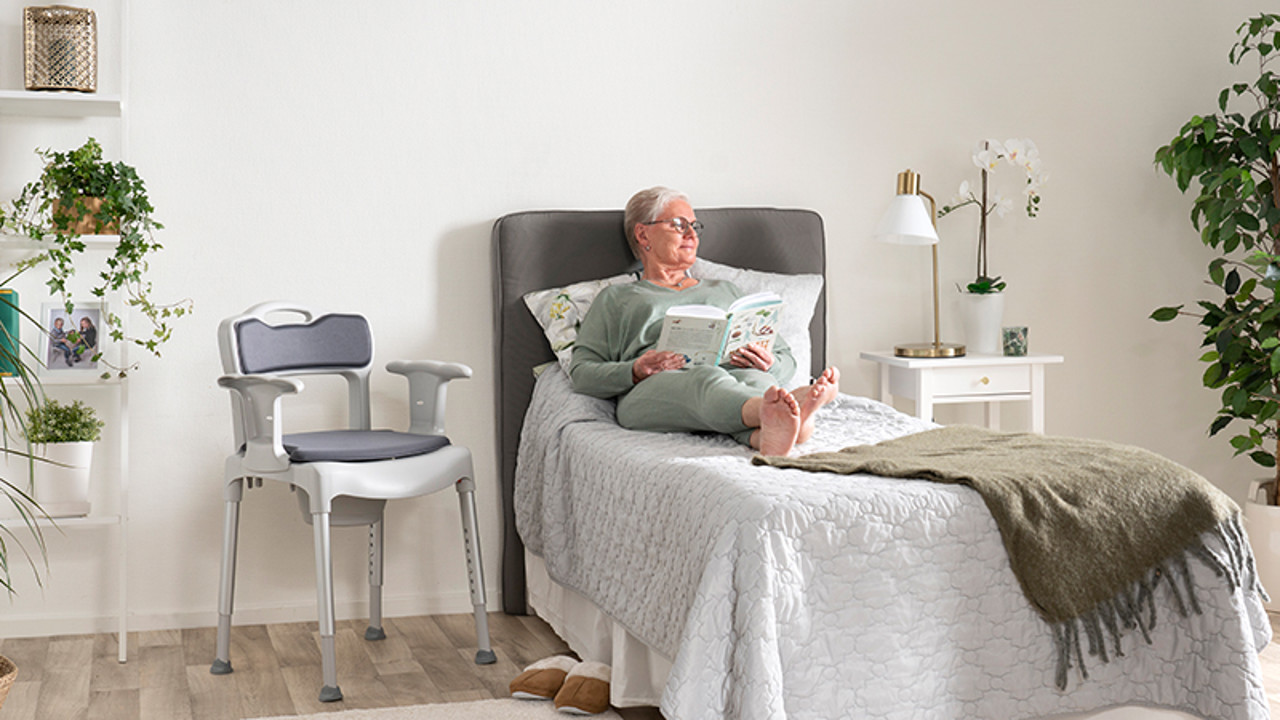
Commode chairs
A static commode chair is an adaptable 3-in-1 assistive device. It functions as a bedside commode with a removable pan, a toilet seat raiser, and a stable shower chair. It can be used with a pan by the bedside or as a toilet seat riser when placed over a toilet. It can also be used as a shower chair. Sturdy yet lightweight, the commode can be moved easily between different areas while offering stable support when in use. It is easy to adjust the height, and the arm supports assist when standing or sitting down.
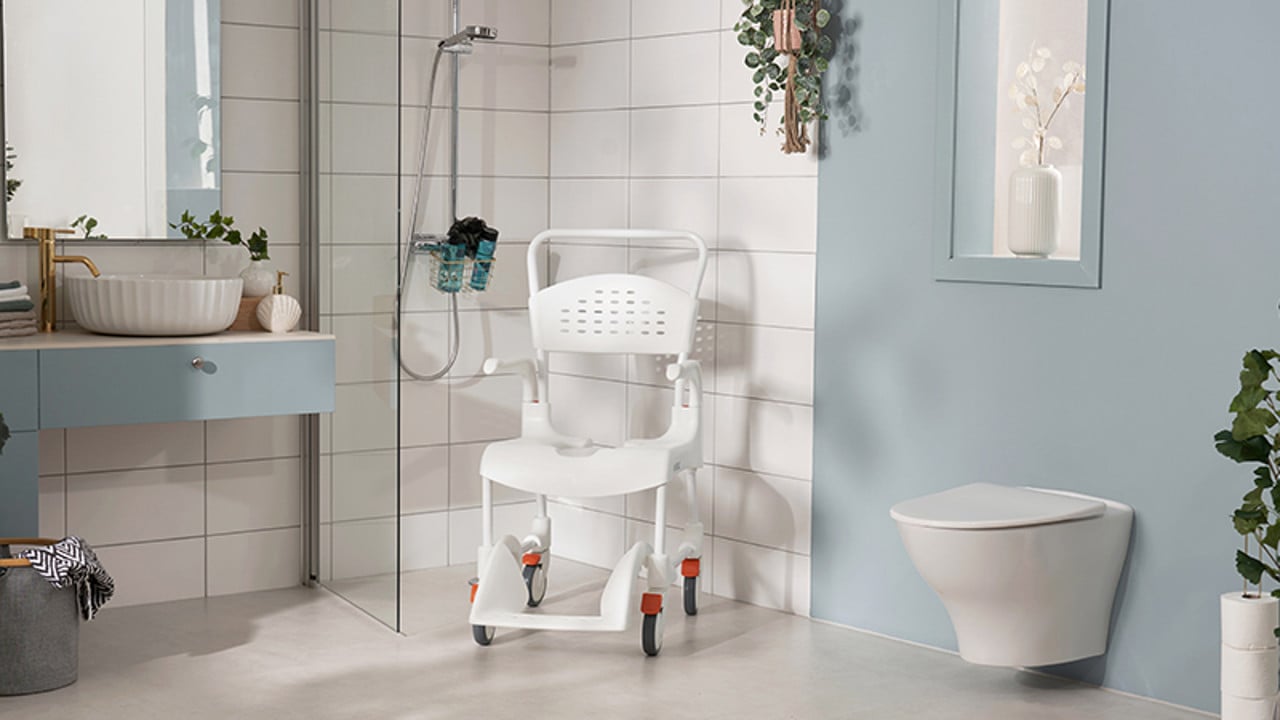
Mobile shower commode chairs
Mobile shower commode chairs have castor or self-propelled wheels, allowing them to move between rooms and within the bathroom while the user stays seated. This lets users transfer from bed to chair and handle toileting and personal care without needing another product, which reduces transfers.
Clinicians and users agree that users who can and want to self-propel should be given chairs with large rear wheels, even for short distances.*6 This supports independence in personal care tasks.
Tilt-in-space options are available for users who need extra support due to reduced postural control. These chairs help maintain a stable and comfortable sitting position while reducing pressure and strain.
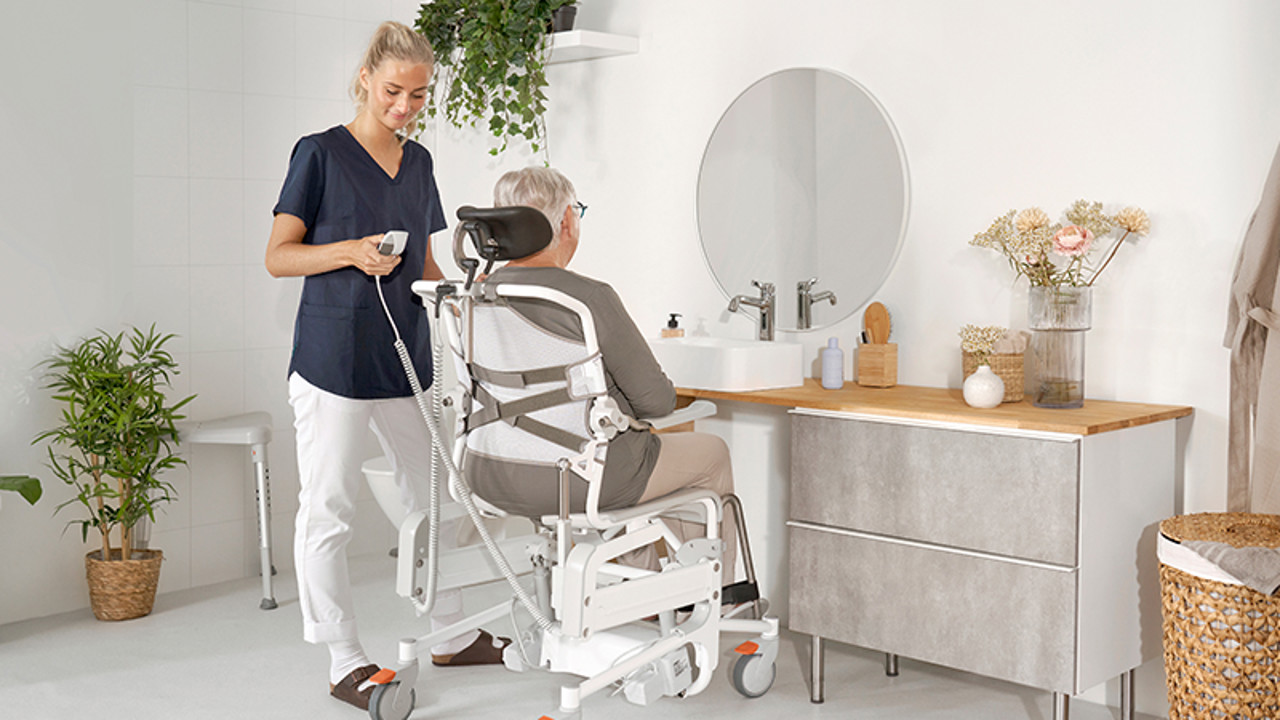
Powered mobile shower commodes
A powered mobile shower commode with height and tilt adjustability while the user remains seated provides numerous advantages for both users and caregivers.
The adjustable features allow caregivers to maintain an ergonomic working position while the user remains seated, reducing physical strain and minimising the risk of work-related injuries.
Additionally, raising the chair to eye level enhances communication and fosters a sense of involvement for the user in their care process. This combination of adjustability, functionality, and comfort promotes a safer, more dignified, and person-centred care experience.
Etac's contribution
Etac offers a wide range of shower commode chairs, including static, mobile and tiltable options, purposefully designed to fit well within home care environments. Our solutions are equipped with seats designed for easy access, either with a generous rear opening and a front recess or a front opening. This design allows for convenient access for both the user and the caregiver. In addition to varying designs of seat cushions, the chairs have been designed around a modular concept with the addition of adaptive accessories, making them highly suitable to meet the needs of the majority as well as the specific needs of more specialist users.
We believe that design and aesthetics play an important role in the acceptance and everyday use of assistive aids. The aids should not only provide support but also blend into the home environment. Etac has a long history of collaborating with industrial designers to create products that combine aesthetics with ergonomics. By combining function and appearance, the user can more easily integrate the assistive device into their daily routines.
We develop safe, high-quality products with a sustainable approach. Made from durable materials, our aids are built to last. Our philosophy is not just about creating assistive devices, but about making daily life easier and more dignified for both users and caregivers.
Our aids are medical devices
Intended purpose
The shower commode chairs are medical devices intended for alleviation or compensation for a functional impairment due to an injury or disability. The devices are designed to facilitate personal hygiene in the shower, at a sink and over the toilet, as well as for transfers (applicable for mobile chairs) to and from the hygiene room.
Intended user
The intended user group for the devices is based on functional ability and not on a specific diagnosis, health condition or age. The devices are primarily intended for adults.
Intended environment
The devices are designed for indoor use and are suitable for homes and institutional bathrooms. They are not designed for swimming pools or similar corrosive environments.
The clinical benefits
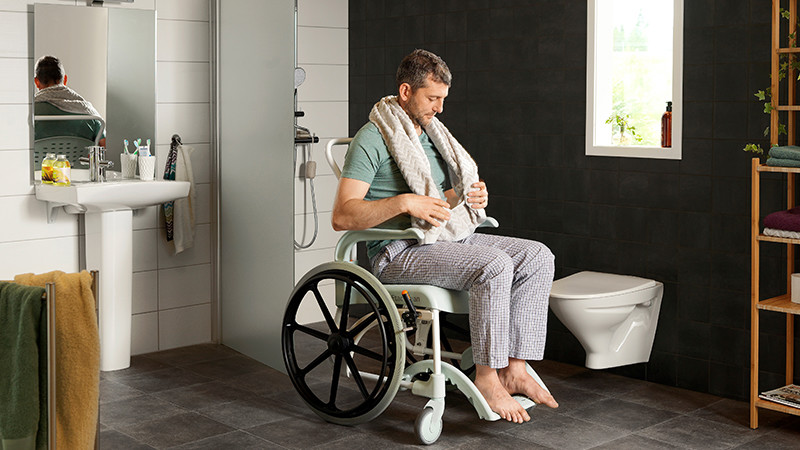
Offers mobility for users
Self-propelled shower commodes enable the user to stay self-reliant in the bathroom.
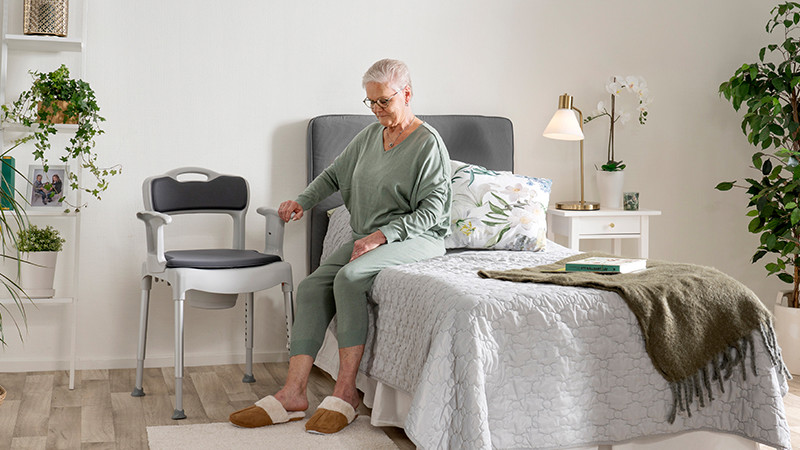
Falls prevention
Appropriate assistive devices in the bathroom reduces the risk of falls and related injuries.
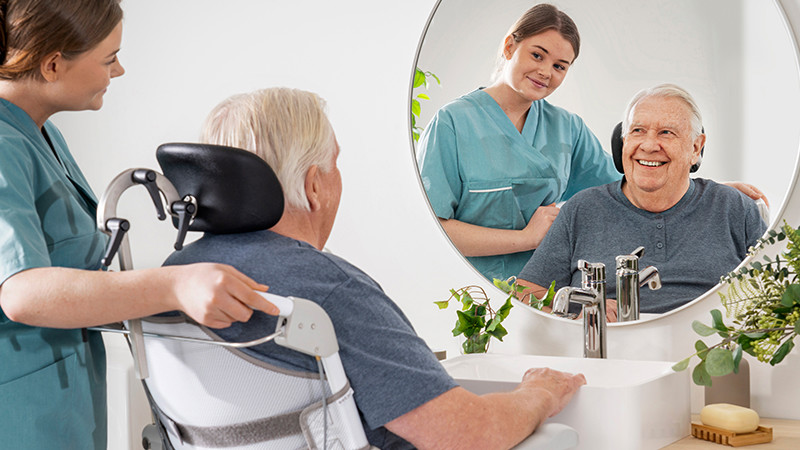
Maintain existing functional level
Enable individuals to prolong their autonomy.
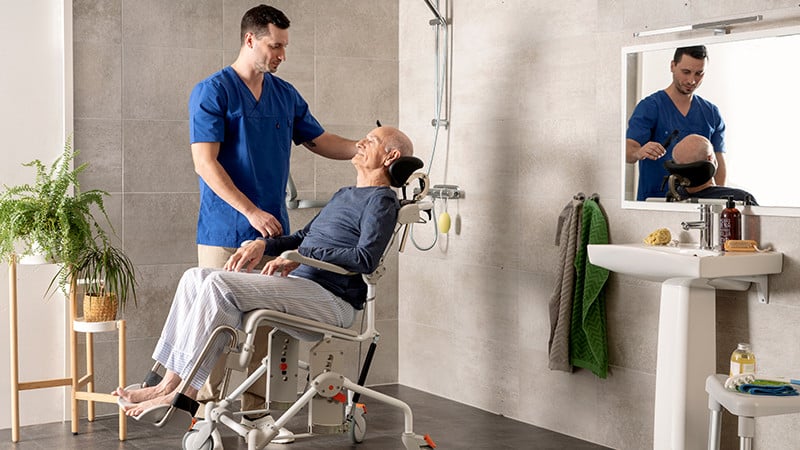
Supports a good sitting position
Adjustments and accessories can promote the user’s abilities and improve their sense of safety
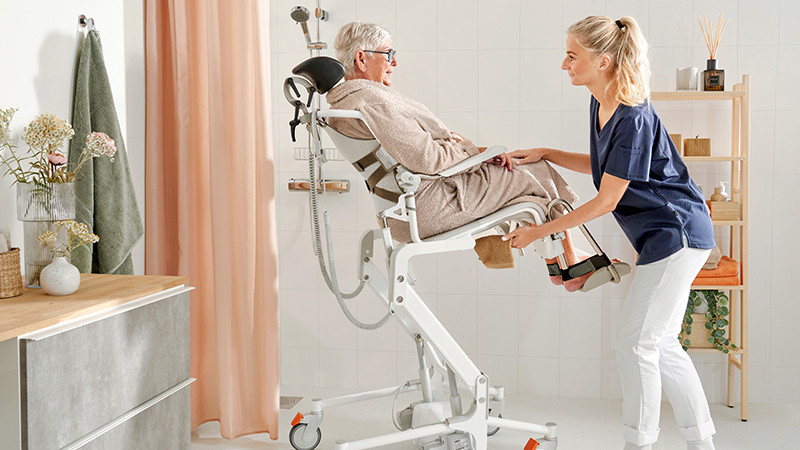
Reduced physical load on carer
A more self-reliant user requires less physical support.
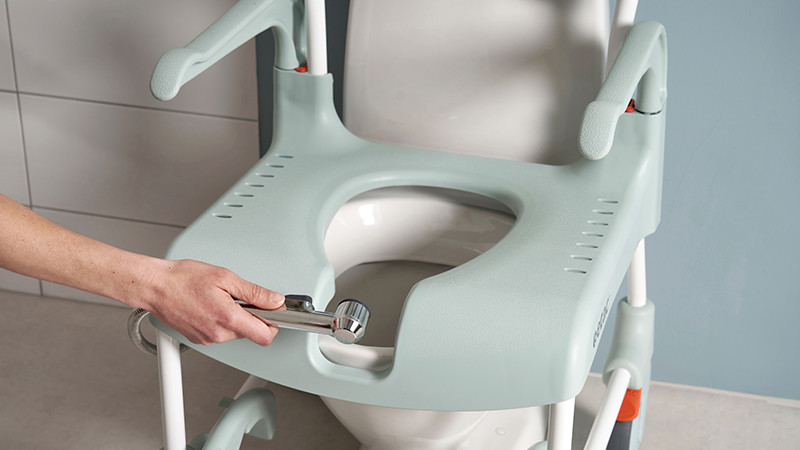
Reduced need for carer assistance
Under-seat access promotes increased user autonomy.
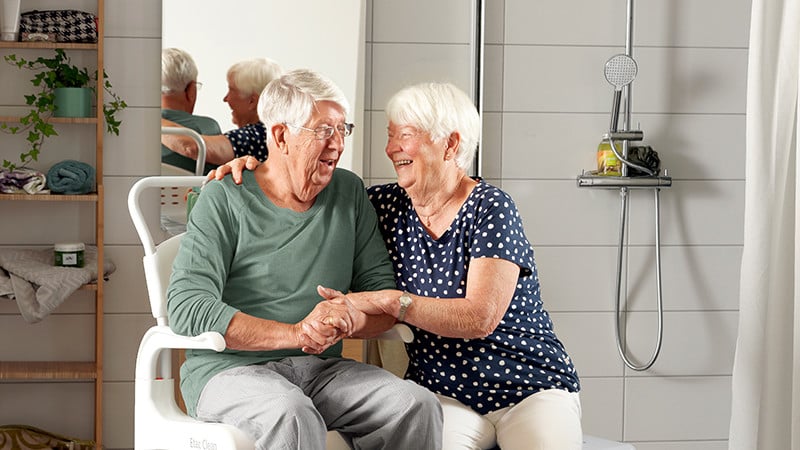
Maintained life quality
Enabling hygiene routines at home can allow the user to age in place, which is highly correlated with quality of life.
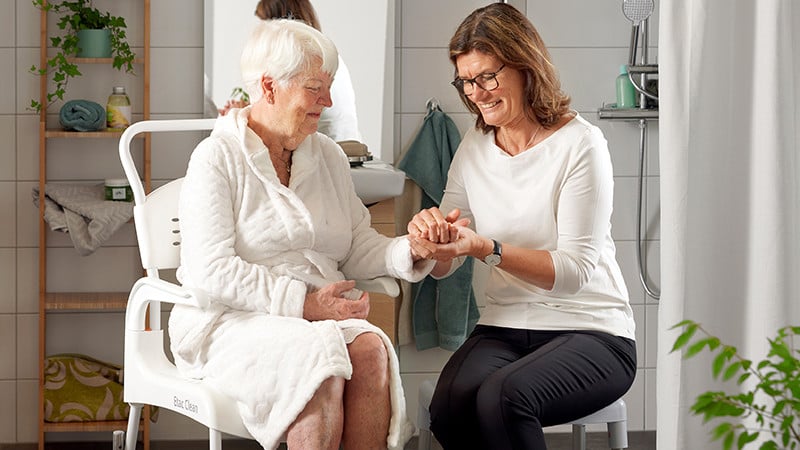
Social benefits
Shower commode chairs support ageing-in-place, increase independence, and encourage participation.
Conclusion
As the global population ages, the number of people with disabilities will increase, leading to a higher demand for assistive products. Effective management of Activities of Daily Living (ADLs) is crucial for maintaining the health, dignity, and quality of life for individuals with disabilities. Properly designed assistive technologies, such as shower commode chairs, play a vital role in facilitating these activities and ensuring independence. These products must be user-friendly, adaptable, and supportive of both the physical and emotional needs of the care recipient. Additionally, the increasing need for home-based care highlights the importance of ergonomic design to support both a functional working environment for caregivers and the dignity of users.
References:
- WHO. Priority Assistive Products List: Improving access to assistive technology for everyone, everywhere, 2016.
- WHO. Global report on assistive technology, 2022.
- WHO. World report on disability, 2011.
- Malassigné P. Design of the advanced commode-shower chair for spinal cord-injured individuals. Journal of Rehabilitation Research and Development, 2000.
- Naylor J R. Commodes: inconvenient conveniences. British Journal of Nursing, 1993.
- Friesen E. Usability of mobile shower commodes for adults with spinal cord injury. PhD Thesis, School of Health and Rehabilitation Sciences, The University of Queensland, 2016.



